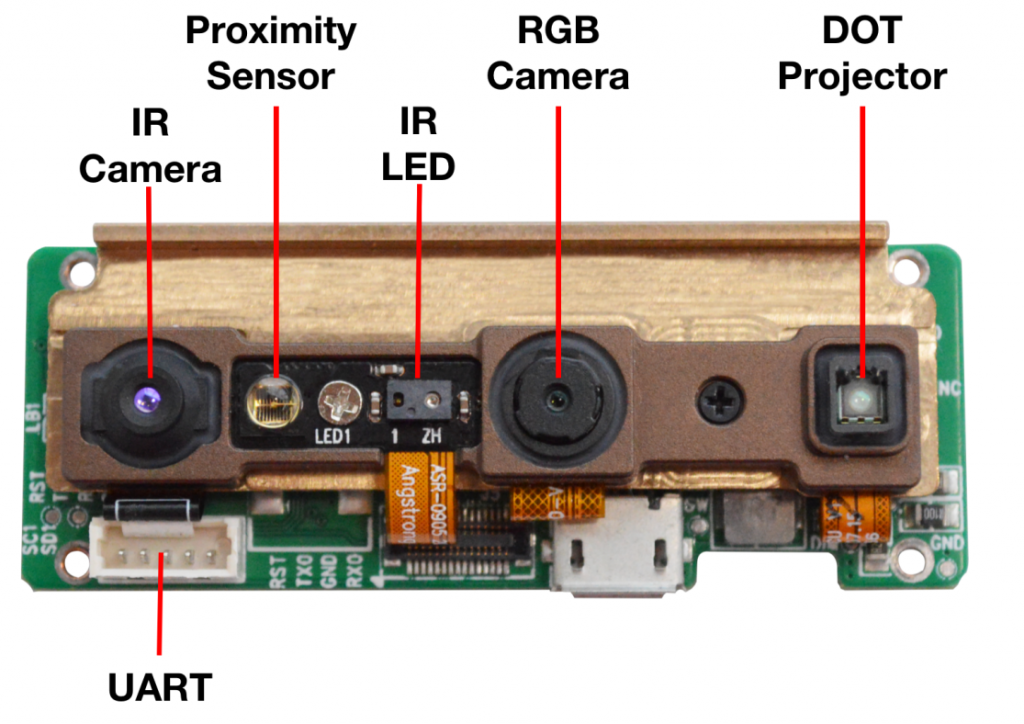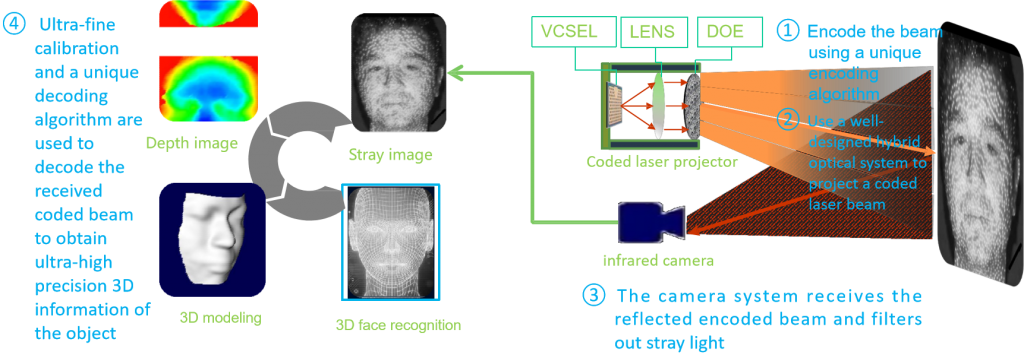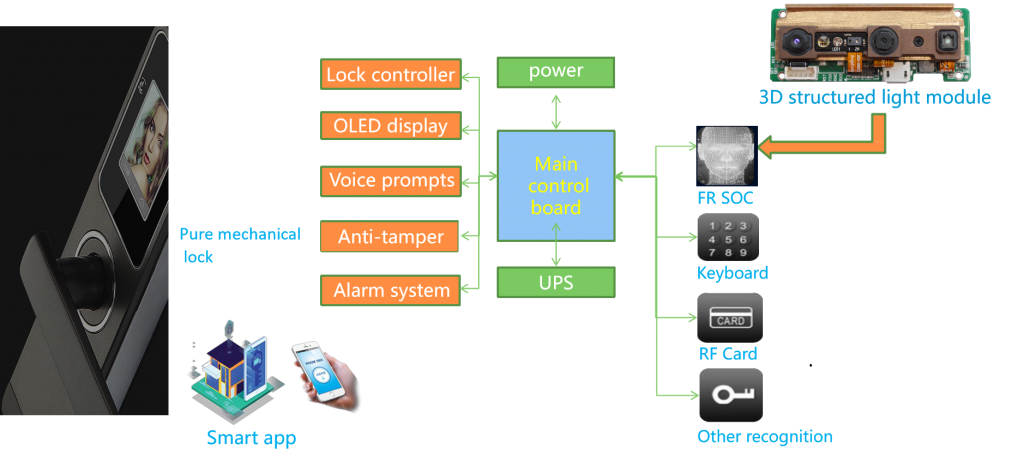Linksprite 3D structured light face recognition module is based on proprietary state-of-art deep learning face recognition algorithm, integrated with 3D structured light camera and low power RISC-V control board with neural network acceleration unit. Using a high-precision structured light camera, the module can obtain the visible light (RGB), near infrared and depth images, implementing the functions of face detection, liveness detection and face recognition.
Linksprite 3D sensor camera can project more than 30000 points to identify the user’s face with submillimeter accuracy. Compared with 2D technology, 3D face recognition is more accurate and efficient, and can quickly identify person even under low illumination or even all black conditions.

The product allows for greater applications including smart door lock, sweeping robot, face access control and attendance, etc.
Why 3D structured light technology?
The 2D face recognition limitations:
- 2D face recognition is prone to anti-spoofing attacks including photo, video, mask or statue. Therefore, the accuracy and security of the recognition is a concern.
- Since the face of person is not flat, projecting a 3D face to a 2D image causes loss in the feature representing information. Particularly in complex illumination condition such as outdoor, the recognition accuracy drops significantly.
- Most face recognition algorithms are aimed at different poses such as frontal and quasi-frontal face images. Profile faces, pitching, etc., and occlusions such as hats and glasses seriously affect the performance of face recognition.

3D face recognition:
- 3D structured light modules usually have VCSEL, optical diffraction element (DOE), infrared camera and other core devices. After the beam emitted by the VCSEL laser passes through the collimator, the laser speckle is obtained by the DOE device, and then the grating is used to “diffractive copy”. Expand the projection angle
- The 3D structured light can project more than 30,000 laser dot arrays to the target object to form a specific series of pattern combinations; the deformation of the light spot is captured by the infrared camera, and the depth map of the measured object is calculated based on the principle of triangulation, and the depth map can be converted into a point cloud map, 3D reconstruction, 3D face recognition and live detection

Our solution:

Features:
- Face enrollment, detection and face recognition through the serial communication protocol
- Face recognition time :< 350ms.
- Face recognition accuracy: > 99.9%
- Face recognition distance: 0.4 ~ 1.0m
- Liveness detection, effectively prevent plane attacks (photo, video, paper mask bending, etc.) as well as common mask and model attacks.
- Face database capacity: < 200
- Power consumption: 500 MW.
- Dimensions: 69*20.8*14.5 mm
Highlights:
Submillimeter accuracy. The camera use the highest precision 3D structured light technology at up to 30000 projection lattice, and calculate megapixel 3D point cloud with submillimeter accuracy.

Robust and adaptable. Designed with the 940nm active infrared light source, face recognition can be less influenced by sunlight and has a better performance in low illumination or even all black environments.
Optimized safety design. The camera has safety protection circuit, which will detect the abnormality and close the projector automatically, avoiding the injury to human eyes caused by direct laser.

Super large viewing angle. DOE and IR sensor are specially designed with FOV of 74.6 ° in vertical direction.
